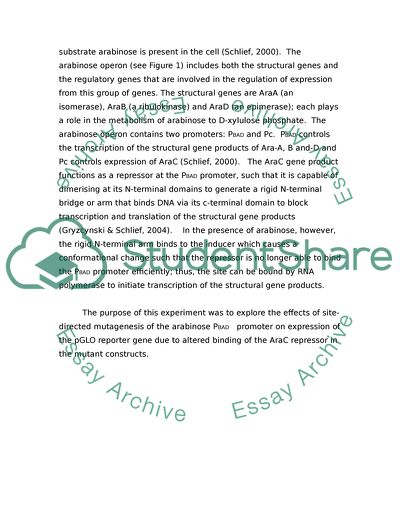Cite this document
(Mutagenesis of an Arabinose Inducible Promoter Lab Report Example | Topics and Well Written Essays - 1250 words, n.d.)
Mutagenesis of an Arabinose Inducible Promoter Lab Report Example | Topics and Well Written Essays - 1250 words. https://studentshare.org/biology/1718019-biology-degree-second-year-genetics-mutagenesis-of-an-arabinose-inducible-promoter
Mutagenesis of an Arabinose Inducible Promoter Lab Report Example | Topics and Well Written Essays - 1250 words. https://studentshare.org/biology/1718019-biology-degree-second-year-genetics-mutagenesis-of-an-arabinose-inducible-promoter
(Mutagenesis of an Arabinose Inducible Promoter Lab Report Example | Topics and Well Written Essays - 1250 Words)
Mutagenesis of an Arabinose Inducible Promoter Lab Report Example | Topics and Well Written Essays - 1250 Words. https://studentshare.org/biology/1718019-biology-degree-second-year-genetics-mutagenesis-of-an-arabinose-inducible-promoter.
Mutagenesis of an Arabinose Inducible Promoter Lab Report Example | Topics and Well Written Essays - 1250 Words. https://studentshare.org/biology/1718019-biology-degree-second-year-genetics-mutagenesis-of-an-arabinose-inducible-promoter.
“Mutagenesis of an Arabinose Inducible Promoter Lab Report Example | Topics and Well Written Essays - 1250 Words”. https://studentshare.org/biology/1718019-biology-degree-second-year-genetics-mutagenesis-of-an-arabinose-inducible-promoter.


